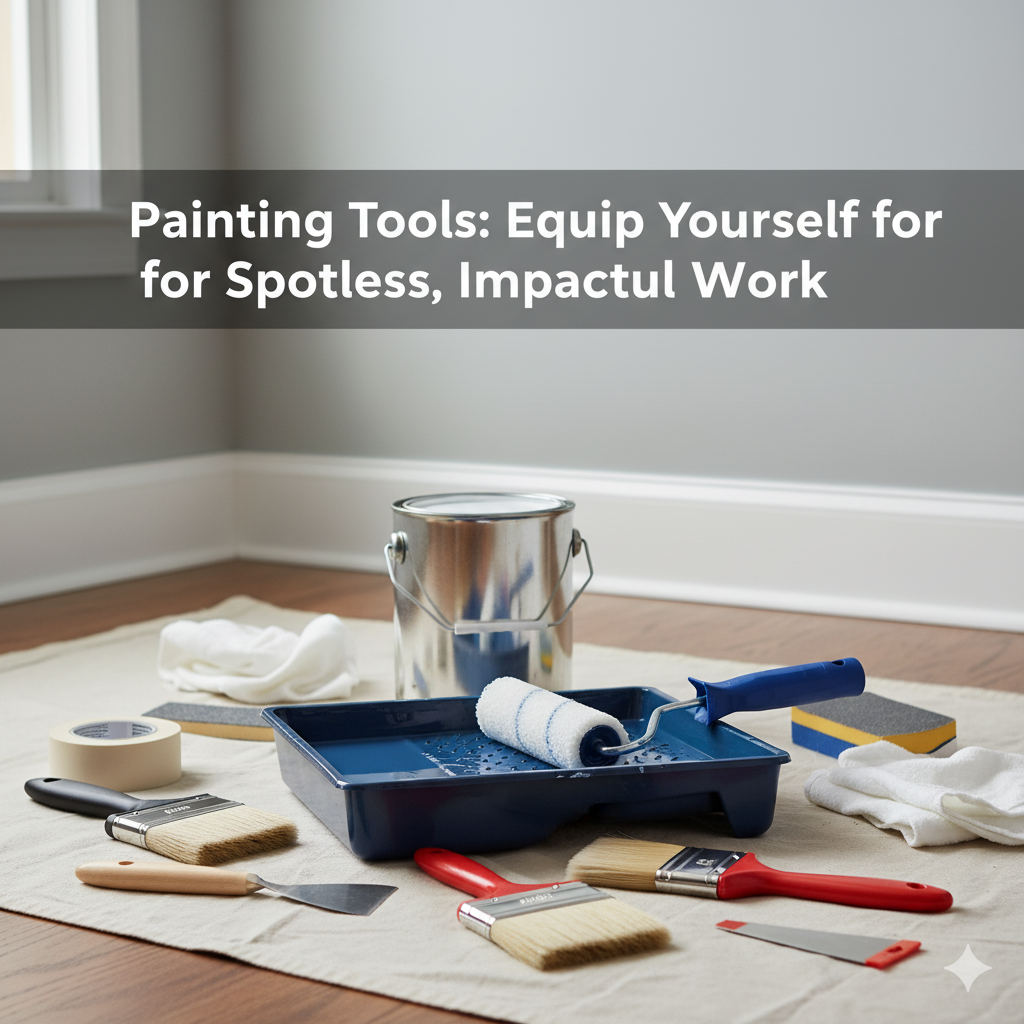Painting Tools: Essential Equipment for Smooth, Professional Results

Painting can completely transform a room, refresh an old surface, and bring personality into your space. But the secret to achieving a smooth, professional-looking finish lies in using the right painting tools. From brushes and rollers to trays and edging equipment, your choice of tools determines coverage, precision, and final appearance. With the right gear, even a beginner can produce clean lines, consistent layers, and durable results. At Irvine Carpet One, you’ll find reliable painting tools that support everything from simple touch-ups to full interior or exterior projects.
Why Quality Painting Tools Matter
Better Coverage
High-quality painting tools distribute paint evenly across surfaces. A good roller holds the right amount of paint, reducing drips and streaks, while well-made brushes ensure clean edges and controlled strokes.
Saves Time and Effort
Using the right tools makes painting faster and more efficient. A sturdy roller with an extension pole handles large walls quickly. Painter’s tape eliminates tedious edge-cleaning work. Drop cloths prevent messes and minimize cleanup.
Improves Durability
A smooth, even coat bonds better and lasts longer. When tools help paint adhere properly, you avoid early peeling, cracking, or uneven texture.
Cleaner, More Professional Results
With proper painting tools, the final finish appears uniform, sharp, and appealing. Whether you’re refreshing an accent wall or doing a complete remodel, good tools elevate the outcome.
Essential Painting Tools for Successful Projects
Paint Brushes
Brushes come in a variety of shapes and bristle types. Angled brushes are ideal for corners and trim, while flat brushes work well for broad strokes. The brush type you choose affects texture and precision.
Paint Rollers
Rollers handle large surfaces more quickly than brushes.
-
Short-nap rollers for smooth walls
-
Medium-nap rollers for lightly textured surfaces
-
Long-nap rollers for rough surfaces like brick
Choose based on the wall texture to ensure even distribution.
Roller Frames and Extension Poles
A strong roller frame provides stability and comfort. Extension poles allow you to reach ceilings and tall walls without repeatedly climbing a ladder.
Paint Trays and Liners
Trays hold paint and allow you to load rollers evenly. Liners make cleanup faster, saving time at the end of your project.
Painter’s Tape
This tool protects edges, ceilings, windows, and trim from accidental smudges. Painter’s tape helps achieve smooth, straight lines and keeps your paint job sharp.
Drop Cloths
Protect your floors, furniture, and fixtures with canvas or plastic drop cloths. They prevent unwanted splatters and keep the area clean.
Sandpaper and Sanding Blocks
Sanding removes imperfections on walls and increases paint adhesion. Preparing the surface is just as important as applying the paint itself.
Scrapers and Putty Knives
These tools help remove peeling paint and fill holes or cracks before painting. Smooth walls lead to more professional results.
Stir Sticks and Paint Mixers
Proper mixing ensures color consistency. Even minor differences in pigment distribution can cause noticeable patchy areas once dry.
How to Choose the Right Painting Tools
Match Tools to the Surface
Different wall types demand different tools. Smooth walls need short-nap rollers. Rough surfaces require thick-nap rollers for complete coverage.
Pick Tools Based on Paint Type
Latex paints work well with synthetic brushes, while oil-based paints pair best with natural-bristle brushes. Make sure your tools match your paint selection.
Comfort and Ergonomics
Painting projects can take hours. Choose painting tools with comfortable grips and lightweight designs to reduce fatigue.
Quality Over Quantity
Buying a few high-quality tools is more effective than collecting cheap equipment that doesn’t perform well or last.
Maintenance and Reuse
Tools that are easy to clean and maintain offer long-term value. Rinse brushes immediately, clean trays, and store rollers properly to keep them in top shape.
Preparation Tips Before Painting
-
Clean walls to remove dust and oils
-
Repair cracks and holes
-
Sand uneven areas
-
Use primer when needed
-
Tape the edges carefully
-
Protect floors and furniture
Proper preparation improves final results dramatically.
Aftercare and Tool Maintenance
-
Wash brushes and rollers immediately after use
-
Let tools dry completely before storing them
-
Keep tools in a dry area to avoid rust
-
Replace damaged or worn-out tools promptly
Well-maintained tools perform better and last longer, saving you money over time.
Conclusion
The foundation of a good paint job starts with the right painting tools. From brushes and rollers to prep supplies and finishing accessories, each tool plays a vital role in achieving smooth coverage, clean lines, and durable results. With dependable painting tools available at Irvine Carpet One, you can approach any painting project with confidence. Whether you're a DIY homeowner or a professional painter, investing in quality gear ensures a finish that looks great and stands the test of time.
- Art
- Causes
- Crafts
- Dance
- Drinks
- Film
- Fitness
- Food
- Spellen
- Gardening
- Health
- Home
- Literature
- Music
- Networking
- Other
- Party
- Religion
- Shopping
- Sports
- Theater
- Wellness




